Steam Spotlight - The Legend of Heroes: Trails in the Sky
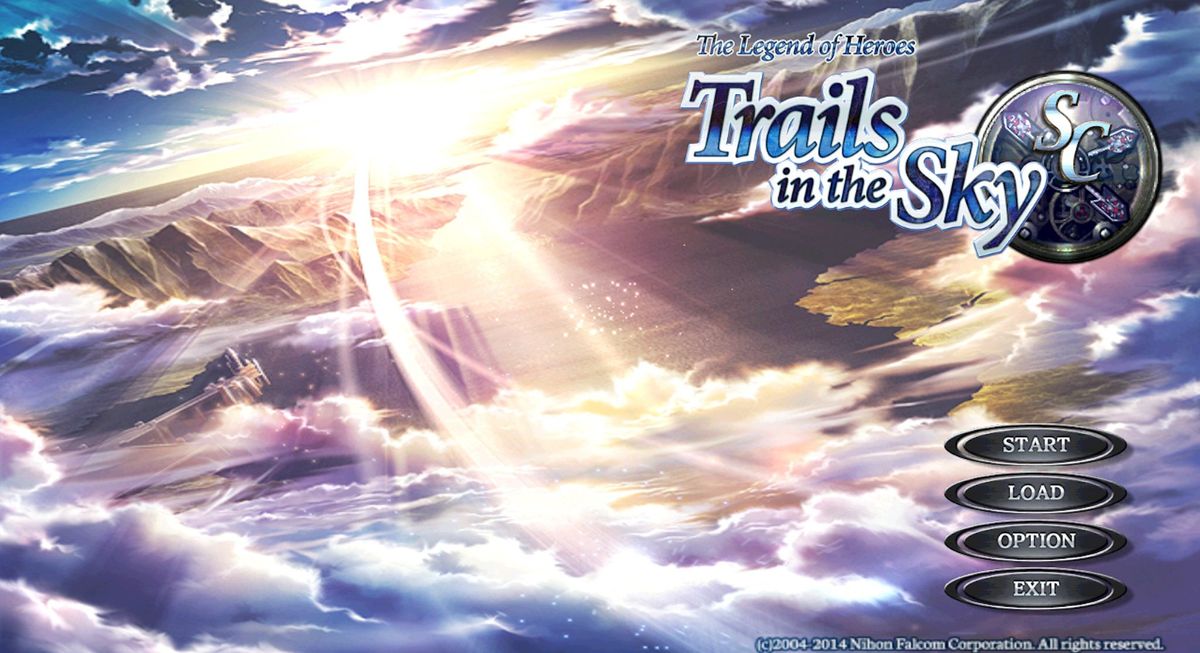
Steam Spotlight has been on a nice long vacation as of late, but now it's back. And what better Steam game to return with than one from Japanese developer Nihon Falcom – makers of the charming Gurumin: A Monstrous Adventure and the classic action-RPG Ys: The Ark of Napishtim?
XSEED Games frequently teams up to bring Falcom games to English audiences. Last year, they released the popular Legend of Heroes: Trails in the Sky – First Chapter on Steam. And this year, Trails in the Sky – Second Chapter has finally made it to North America on both Steam/GOG and PSP/Vita. An old-school JRPG with amazing world-building and fantastic writing, the Trails in the Sky games are instant classics. Read on for our detailed impressions and video!
Powered by orbs
The Trails in the Sky series takes place in the kingdom of Liberl, 10 years after the country fought off an invasion from the neighboring Erebonian Empire. Now the two lands share an uneasy peace.
In this world, humanity has harnessed the power of a resource named Quartz. The Quartz is converted to orbs, and these orbs power all technology – including massive airships - hence the "Trails in the Sky." Humans can even wield magic thanks to the power of the orbs. The spells they cast are called Orbal Arts or simply Arts.
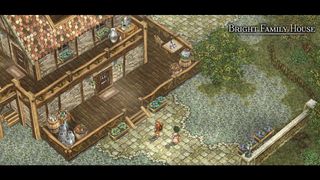
Trails in the Sky First Chapter stars a young protagonist named Estelle Bright. As a child, her father Cassius – a great warrior – brought an injured boy named Joshua into their homes. He joins the bright family and the two children grow up together.
At the age of 16, Estelle and Joshua become Bracers. The Bracers in this world work a lot like Gunslingers and especially Witchers. They're sort of like police officers, dealing with monster threats, disputes between citizens, and more.
As the First Chapter begins, our youthful duo has just finished their initial training. In order to become full Bracers (of the lowest rank), they must complete one final test: enter the city sewers and retrieve two valuable boxes. Naturally the game uses the monster battles within the sewers as a combat tutorial.
Get the Windows Central Newsletter
All the latest news, reviews, and guides for Windows and Xbox diehards.
Monster Hunters
The Trails in the Sky series dodges one of the less popular Japanese Role-Playing Game (JRG) tropes – there are no random battles. Players can see enemies while they explore and choose to face or avoid them.
If the party touches an enemy from behind, they'll score a Preemptive Strike and get an extra round of attacks in when the battle starts. But if the enemies catch our heroes from behind, the party suffers a Surprise Attack and starts the fight at a disadvantage.
The battle system works much like the Grandia series in that heroes and enemies each have an attack and movement radius on the battlefield. If an enemy is too far away for your basic attack to reach, you'll have move forward and wait for another turn to strike. Or you might move a character away for safety.
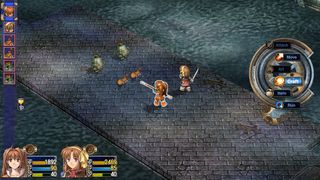
Our heroes have three basic ways to fight: Standard Attacks, Orbal Arts, and Crafts. Arts act just like magic, consuming precious EP (magic points) when used. These moves also take time to cast – sometimes multiple turns. Crafts function like magic as well, but they activate instantly instead of taking multiple turns to cast. Crafts cost Craft Points (CP) to use. Each character earns CP when he or she attacks or gets hit, so they can be used frequently without the need for replenishing items. Powerful S-Crafts consume a lot of CP but can be used ahead of the character's normal turn order.
A bar along the left side of the screen represents the turn order for friends and foes alike. Uniquely, sometimes one of several bonus icons appears alongside a character's place on the turn meter. When the turn with the icon comes up, that character gets a bonus such as a health refill, increased strength, Arts damage, and more.
The turn-based bonus system adds a fun optional layer of strategy. You can target an enemy that's due for a bonus and take the bonus yourself, or use an S-Craft attack to kill the enemy before it gets the bonus.
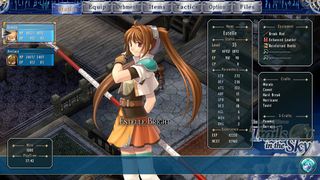
Difficulty isn't usually something you need to worry about in RPGs, but the Trails in the Sky games offer four selectable difficulty levels:
- Easy: Legitimately easy and enemies don't deal much damage.
- Normal: Some difficulty spikes – especially when opening chests filled with monsters and during boss battles
- Hard: Quite tough and requires some strategy.
- Nightmare: Just short of impossible.
Choose wisely when starting a game, as you can't change difficulty without starting over!
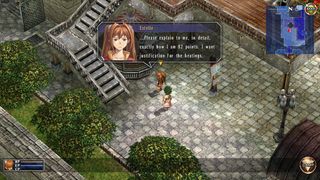
Second Chapter
Trails in the Sky – First Chapter (FC) and Trails in the Sky – Second Chapter (SC) are two separate but interconnected games. You could skip the First Chapter and just play the SC. The Second recaps the final events of the FC, introduces the slightly revamped Orbal Arts system, and provides an optional combat tutorial.
I don't know why anyone would start with the Second Chapter over the first, though. The Trails in the Sky series' greatest strength is the fully-realized world and well-developed character relationships it brings to life.
The NPCs here have an amazing volume of dialog. Each one has a name, personality, and relationships with other NPCs and player characters. Their dialog changes as events happen in the game world, both big and small. If Estelle gets a promotion as a Bracer or helps somebody out, everyone she knows will react to it. Few games are so effective at making you believe in your character's place in the world.
Players get some mild bonuses for starting SC with a completed FC save file. Without a save import, Estelle begins SC at level 35. With the save, she can start at up to level 40. She'll also begin with up to four special items, depending on how many Bracer quests players completed in FC. One of those significantly boosts enemy item drop rates, making it fairly valuable. And of course, some NPCs will remember quests that Estelle completed for them.
As for the driving story for Trails in the Sky SC, it revolves around Estelle's quest to locate Josh. Following the conclusion of FC, he has gone missing. Meanwhile, an organization called The Society of Ouroboros has dark plans for Listerl. Estelle will have to go through even more Bracer training and team up with both old friends and new in order to rescue Joshua and stop Ouroboros for good…
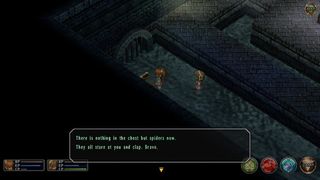
A taste for classics
One look at the screenshots in this story will tell you that the Legend of Heroes: Trails in the Sky series pays tribute to another era of gaming. The First Chapter debuted on Japanese PCs way back in 2004, and Japanese PSP two years later. XSEED released the English version in 2011, followed by a modernized PC port in 2014. One year after FC arrived on Steam, SC has finally made it to Steam and PSP/Vita in English markets.
The Steam games do boast some improvements over the PSP/Vita versions, such as unlocked frame rate and support for high-resolution displays, high-resolution character art, improved UI, minor translation improvements, Steam features like Achievements, Cloud support, and Trading Cards, and more.
That said, Trails in the Sky SC and SC still show their age. These are essentially PlayStation 2/Dreamcast-era RPGs with simplistic 3D environments and prerendered character sprites. But you don't play Trails in the Sky for the visuals – you play it for the unparalleled writing and world-building and dozens of hours of great gameplay. Plus the memorable music!
I love the Trails in the Sky games, but I do have two little issues with them. First, the game doesn't tell you how to speed up text. In most games, the A button would do it. Here it's the B button for some reason. Quite a minor thing (and thanks Epmode for pointing out how to do it).
Second, the characters don't have animations for things like sitting down and getting up. It always looks off when they sort of fade from one place to another without the expected (and necessary) animations. The animations during battle are fine though, so the problem only pops up now and then.
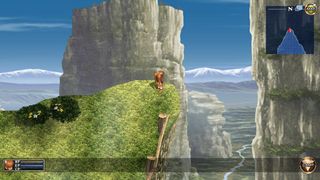
Fans of Japanese RPGs should consider both Trails in the Sky games must-haves. Both the Steam and PSP/Vita versions are absolute classics. If you have a Vita or PSP, I recommend playing on those systems for their portability and convenience. But the Steam game certainly looks the best, supports Xbox controllers, and will run on just about any Windows PC or tablet. Seriously, it only needs 512 MB of RAM!
Grab the First Chapter of Trails in the Sky today and show XSEED some love for translating such huge games into English. If the FC hooks you, then the SC will be waiting with even more role-playing goodness.
Paul Acevedo is the Games Editor at Windows Central. A lifelong gamer, he has written about videogames for over 15 years and reviewed over 350 games for our site. Follow him on Twitter @PaulRAcevedo. Don’t hate. Appreciate!
